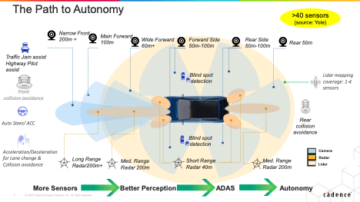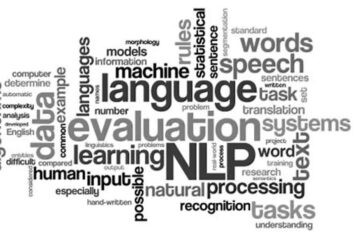
There’s a new sheriff in town at the U.S. Department of Transportation in the form of Department Secretary Pete Buttigieg with an acting deputy in Acting Administrator Dr. Steve Cliff at the National Highway Traffic Safety Administration (NHTSA). NHTSA has served notice on bad boy Tesla CEO Elon Musk that it is investigating the circumstances connected with 11 fatal crashes of Tesla vehicles operating in Autopilot mode.
This is a key turning point in the industry for the undermanned and underfunded NHTSA. After four years without an administrator, the agency appears to be finally taking the reins, building a regulatory agenda (much of it already baked into the pending infrastructure bill), and slipping into the driver seat to guide the industry.
One of the higher profile and frankly embarrassing issues facing the agency has been periodic crashes of Tesla vehicles operating in Autopilot mode. Many of these crashes received high priority on-site investigative treatment by the agency and its regulatory cousin the National Transportation Safety Board (NTSB).
The NTSB most recently concluded that Tesla ought to be instructed to add an effective driver monitoring system and limit the use of Autopilot to divided highways. For its part, NHTSA expressed concern, but accepted Tesla’s dodges that A) drivers in fatal crashes of their vehicles were misusing Autopilot by not paying attention; and B) that data showed Tesla vehicles with Autopilot were safer to operate than non-Autopilot equipped vehicles.
The concern among regulators is clearly that other auto makers might follow Tesla’s lead, flooding highways with semi-autonomous driving systems being similarly misused resulting in similar fatal crash scenarios. It is perhaps for this reason that the agency sent a letter to George Hotz, founder of self-driving startup Comma.ai, expressing concern that the company’s aftermarket self-driving system would create hazardous driving circumstances for its users and other drivers sharing the road with them.
Hotz took two steps in response to the NHTSA outreach. He cancelled plans to introduce his aftermarket device, and he shifted to offering his software on a downloadable open source basis and sold the devices separately. Hotz also added a driver monitor to his device, which earned Comma.ai a top ranking in a Consumer Reports evaluation of self-driving systems.
Until now, both Musk and Hotz have found ways to work around NHTSA, while more traditional robotaxi developers, like Kyle Vogt at General Motors’ Cruise, have sought self-driving car exemptions from regulatory oversight by NHTSA. Safety advocates are outraged at the behavior of both NHTSA and Tesla. Tesla fans are thrilled with their cars and the freedom with which they are trusted to operate in semi-autonomous mode in their Tesla’s.
NHTSA certainly faces a challenge in coming to grips with the Tesla Autopilot application. It is clear that the system fails when it is being misused, but also fails when drivers are paying attention – there are multiple Youtube videos to attest to the wandering guidance of Tesla systems and their ability to mistake a Burger King sign for a Stop sign under the right circumstances.
There is an even more salient concern which is the challenge of properly activating and de-activating the system in the car. Regardless of the reliability of Tesla’s sensing systems, it is quite simple for a driver to make an incorrect selection in his or her attempt to turn on or maintain Autopilot – creating a significant gap between the driver’s expectations and the vehicle’s actual performance.
It remains to be seen whether NHTSA has the resources and expertise necessary to evaluate Tesla’s Autopilot – especially as the system itself is a moving target with regular updates of its algorithms and sensing capabilities. Perhaps NHTSA could start with the Tesla’s own warning message – most recently received by drivers of the Model 3 with Full Self Driving beta. The message stated: “(Your vehicle) may do the wrong thing at the worst time…(keep your) hands on the wheel and pay extra attention to the road.”
As soon as that message was sent to Tesla owners, NHTSA ought to have stepped in. It is comparable to GM telling owners of older model Chevrolet Bolts to park their cars outdoors. Of course, those Bolts were already subject to a NHTSA-initiated recall.
The latest initiative by NHTSA – to investigate Tesla crashes – is an effort to at least make an effort. Like President Biden said about climate change: Doing nothing is not an option. The best news of all is that NHTSA is no longer asleep at the wheel. It is an open question as to whether the Agency is ready to take the wheel. The bad boys of AV tech will be watching closely.
Source: https://semiwiki.com/automotive/302803-can-will-nhtsa-rein-in-avs-bad-boys/
- 11
- AI
- algorithms
- All
- among
- Application
- around
- auto
- autonomous
- autonomous vehicle
- autopilot
- AV
- BEST
- beta
- biden
- Bill
- board
- Building
- burger
- car
- cars
- ceo
- challenge
- change
- Chevrolet
- Climate change
- coming
- consumer
- Crash
- Creating
- cruise
- data
- department of transportation
- developers
- Devices
- driver
- driving
- Effective
- Elon Musk
- faces
- facing
- Finally
- follow
- form
- founder
- Freedom
- full
- gap
- General
- George
- GM
- guide
- High
- highways
- HTTPS
- industry
- Infrastructure
- Initiative
- investigate
- issues
- IT
- Key
- King
- latest
- lead
- model
- monitoring
- news
- Ntsb
- offering
- open
- open source
- operating
- Option
- Other
- outdoors
- owners
- Pay
- performance
- president
- Profile
- Regulators
- Reports
- Resources
- response
- Safety
- self-driving
- self-driving car
- Simple
- Software
- sold
- start
- startup
- system
- Systems
- Target
- tech
- Tesla
- Tesla autopilot
- top
- traffic
- transportation
- treatment
- u.s.
- Updates
- users
- vehicle
- Vehicles
- Videos
- Wheel
- Work
- years
- youtube





